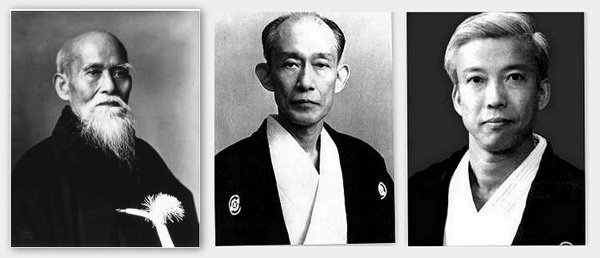Aikido is budo. It is a martial art created in Japan. Translated, it means “The Way of harmonizing [with the] energy” (AI - harmony, KI - energy, and DO - the way). Under this name, the founder Morihei Ueshiba sensei officialy established this martial art in 1941-2, using the knowledge from previously mastered martial arts.
Regarding the technical part, the biggest influence in creating aikido had the martial art “Daito ryu aiki jujutsu”. Morihei Ueshiba learnt Daito Ryu from Takeda Sokaku, who was the first to teach this medieval samurai martial art outside the Takeda clan.
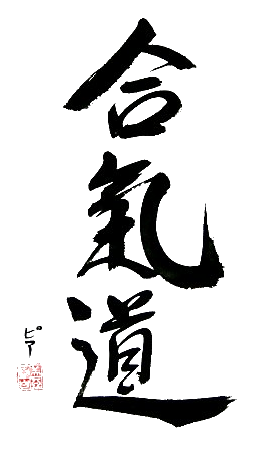 The ideological part of aikido was build up under the influence of the religion beliefs from Omoto kyo (a Shinto sect), hence the idea for not harming the opponent.
The ideological part of aikido was build up under the influence of the religion beliefs from Omoto kyo (a Shinto sect), hence the idea for not harming the opponent.
After the passing of the founder, many offshoots have been formed. Almost all of his distinguished students founded different aikido schools with various names. Today, the most widely spread branch in the world is the institution formed by the founder himself, called Aikikai. This institution represents the mainstream and since its leadership is a matter of succession, the present doshu (leader of the way) is Moriteru Ueshiba, the grandson of the founder.
The techniques in aikido have been created on the principle of using the momentum of the attacker, i.e. his force. It means that the attack should not be confronted (with blockades and punches), but must be avoided with evasive movements. With this movements we strive to put our body in the right position so that the opponent can be brought off balance and in that way make him easy to be overpowered. It takes a long term practice for one to be able to do this. The effects from the trainings have multiple benefits both for the physical and the mental health.
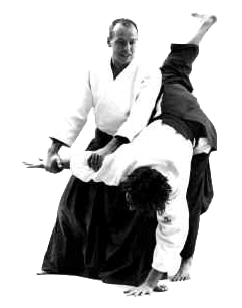 The self-defence is something that goes without saying when martial art is mentioned, but aikido is specific because the one who practices aikido should be skilful not only at defending him/her self, but also in doing so, being able not to hurt the attacker, thus getting a very valuable choice. At the same time this is one of the major pluses because of which aikido is so popular in present times.
The self-defence is something that goes without saying when martial art is mentioned, but aikido is specific because the one who practices aikido should be skilful not only at defending him/her self, but also in doing so, being able not to hurt the attacker, thus getting a very valuable choice. At the same time this is one of the major pluses because of which aikido is so popular in present times.
Sanshinkai Aikido
In our club, aikido is practiced by the methodology created by Masatomi Ikeda sensei. He paralleled aikido with two other complementary disciplines: Genki-kai and practice of the Hojo kata. This system was named Sanshinkai Aikido. Sanshinkai means: The kingdom of three hearts (essences). Genki-kai is a health system based on japanese practices of what we commonly know as Yoga. The Hojo kata is a traditional sword kata from the swordsmanship school called Kashima Shinden Jikishinkage Ryu. Both these disciplines add up to make the learning of aikido a beautiful expirience.
History of Aikido
Todays aikido has its roots in the martial art of one of the oldest japanese feudal families, Minamoto-Takeda. It is considered that the prince Teijun, the sixth son of the emperor Seiwe (850-880), created this martial art called Aiki Jujutsu. The son of the prince, Tsunemote, passed on this martial art to the next Minamoto generation. It was further more perfected by the younger brother of Yoshi Minamoto, Shinra Saburo Yoshimitsu, a great general and strategist and a well-known warrior. His sons who grow up to be famous warriors too, added new elements and techniques and adapted them to the weapons that were used at that time. The second son of Yoshimitsu - Yoshikiyo lived in the castle Takeda in the Kai province.
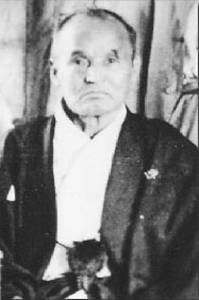 In the Kamakura era (1185-1336) the samurai figure was born and in the next centuries every clan developed its own schools of sword techniques and Jujutsu (fighting with no weapon). These martial arts were very well kept secret, and giving away the techniques of the school to someone who wasn't from the clan was punished with the most severe punishment, death. A great deal of the efficiency and the power of the ancient schools of Jujutsu was exactly in the secrecy of the techniques.
In the Kamakura era (1185-1336) the samurai figure was born and in the next centuries every clan developed its own schools of sword techniques and Jujutsu (fighting with no weapon). These martial arts were very well kept secret, and giving away the techniques of the school to someone who wasn't from the clan was punished with the most severe punishment, death. A great deal of the efficiency and the power of the ancient schools of Jujutsu was exactly in the secrecy of the techniques.
During the Sengoku era (1467 - 1600) the 100 years long war took place which devastated Japan and in that period a lot of Jujutsu techniques were improved by being put to practice. At the end of the era the power of the Takeda family was starting to decline and the head of the family Kenitsugu went to live in the castle Takeda in Aizu in 1575. The martial arts which he passed on to his successors were known under the name Aizu Todome martial art.
At the beginning of the Edo period (1600-1867) the war era was over and the peace era was born. Japan is united under the Tokugava shogun. At that period the Takeda clan from Aiza was keeping and improving their art in complete secrecy until the Meiji period in 1868. Japan leaves a century-old isolation and under the western influence the feudal system was put to an end. A great number of the samurais couldn't get used to the new era because there were no more wars and the steel weapons were replaced by the fire arms. The traditional martial arts were at the verge of extinction.
The head of the family of the sword clan Aizu, Sokaku Takeda (1860-1943), then started to teach the martial art Daito ryu Aiki Jujutsu to others who weren't part of his family, traveling all around Japan and in the end he settled down in Hokaido.
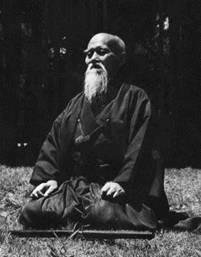 The best student of Sokaku Takeda was Morihei Ueshiba, the founder of Aikido, a man with capabilities that are rarely found anywhere else, who enriched the Daito school with some parts of the other martial arts which he studied in his youth, among which the most important ones are: Yagyu Shingan ryu Jujutsu, Jiki Shinkage ryu kenjutsu, Kito ryu Jujutsu, Tenshin Shinyo ryu Jujutsu, So Jutsu and others.
The best student of Sokaku Takeda was Morihei Ueshiba, the founder of Aikido, a man with capabilities that are rarely found anywhere else, who enriched the Daito school with some parts of the other martial arts which he studied in his youth, among which the most important ones are: Yagyu Shingan ryu Jujutsu, Jiki Shinkage ryu kenjutsu, Kito ryu Jujutsu, Tenshin Shinyo ryu Jujutsu, So Jutsu and others.
He added his own techniques and introduced new principles which elevated many techniques of Daito ryu, in accordance with his believes. As a result, Aikido came to life, which as a martial art that was being formed from the twenties to the fifties of the XX century and took its respectful place in the Budo family.
The biggest and the oldest Aikido organization is the Aikikai Foundation, with its headquarters in Tokyo, now under the leadership of the grandson of the founder of aikido - Moriteru Ueshiba who is its Doshu (the leader of the way). The most famous masters of the Aikikai organization are: Morihiro Saito, Hiroshi Tada, Kazu Chiba, Nobuyoshi Tamura, Katsuaki Asai, Masatomi Ikeda, Hideki Hosokawa, Shoji Nishio, Yasuo Kobayashi, Mitsugi Saotome etc.
Aikikai Foundation
The Aikikai Foundation (財団法人合気会) is the original organisation for the Japanese budo art aikido, officially recognized by the Japanese government in 1940 (in the begining under the name Kobukai). It describes itself as "the parent organization for the development and popularization of aikido throughout the world", although there are several offshoots whose arts are all named aikido. The Aikikai is often referred to as an umbrella organisation for various national and other aikido organisations. Its headquarters, Aikikai Hombu Dojo is located in Tokyo.
After the passing of Morihei Ueshiba, his son Kisshomaru Ueshiba took over the leadership of the organisation. Current leader (doshu) of the Aikikai is the grandson of Morihei Ueshiba, Moriteru Ueshiba. This system where the heir of a martial arts school or system should be the son, either native or adopted for the purpuse of succession, was common in koryu (old school) budo and is referred to as "iemoto".
Aikikai is also often referred to as an 'aikido style', although aikido within the Aikikai can be technically very different. The students of Morihei Ueshiba each had their own interpretation of his art, and in many cases other influences as well. This is reflected in the technical diversity within the organisation.
Budo
Budo(武道) is a term for Japanese martial arts. Traditional budo (from before the Meiji Restoration) is often referred to as koryu bujutsu, while more modern budo arts are called gendai budo.
Budo is a compound of the kanji 武 (bu)-meaning war, warrior, fight, or fighter - and 道 (do)- meaning path or way. Similarly, Bujutsu is a coumpound of the kanji characters 武 (bu) and 術 (jutsu) meaning technique or skill.
Thus, Budo is most often translated as "The Way of War", "the Way of the Warrior", or "martial way". Budomore correctly represents a discipline and way of life specific to the Japanese warrior. It is distinguished by many terms representing the actual technical skills and techniques being practiced such as Kyudo ("The Way of the Bow"), and Kendo and Kenjutsu ("Way of the Sword" and "Sword Techniques" or "Sword Skill").
Many consider Budo the more modern form of a style, interpretation or evolution of the older or more miltaristic bujutsu style or strategy, although this interpretation itself is debated. The various martial styles all place their own individual emphasis on the development of what might be considered more "modern" versus "military" aspects of combat and personal development. Both budo and bujutsu represent a particular strategy or philosophy regarding combat systems with the terms rather loosely applied and often interchangeable. There is no test or standard to determine the classificaiton one way or another.
Budo (way of war) or Bujutsu(war techniques) include all the skills and techniques used by samurai and other Japanese warriors, comprising striking, grappling and weaponry. In modern times these have been broken apart and translated into what are commonly known as karatedo (striking), jujutsu or judo (grappling), aikido, kendo, iaido and kobudo (weaponry).




